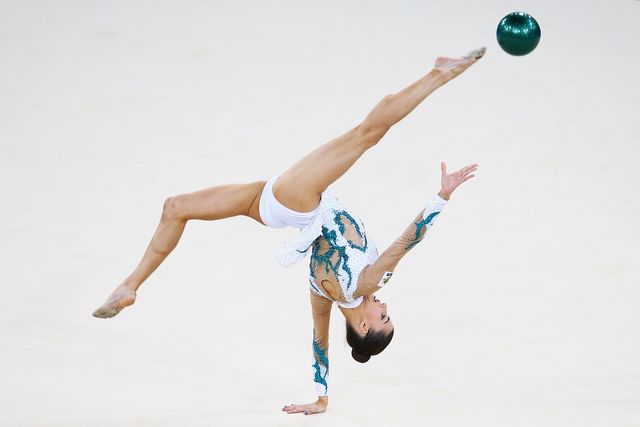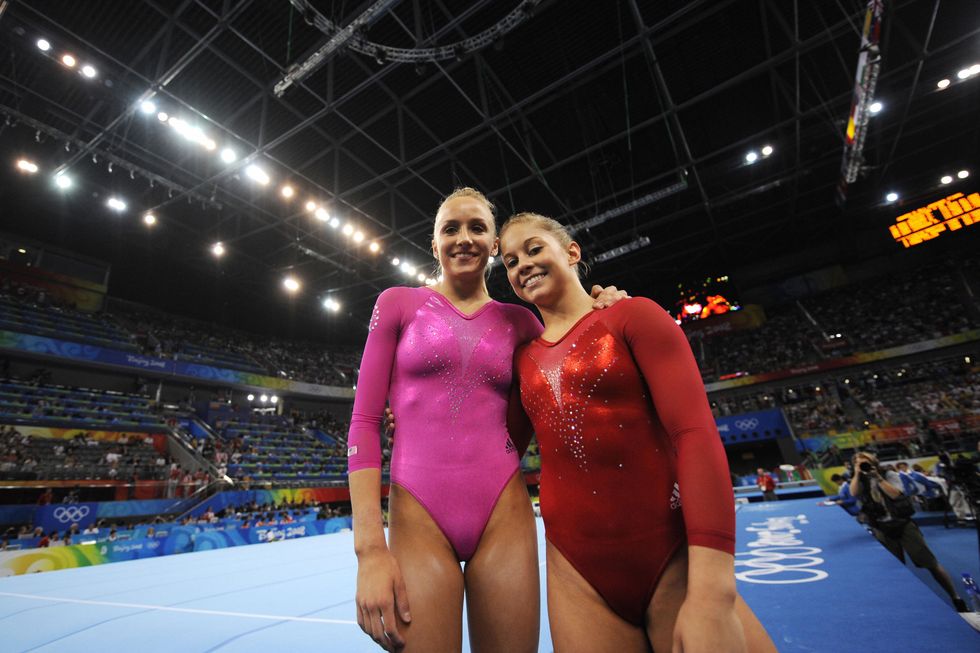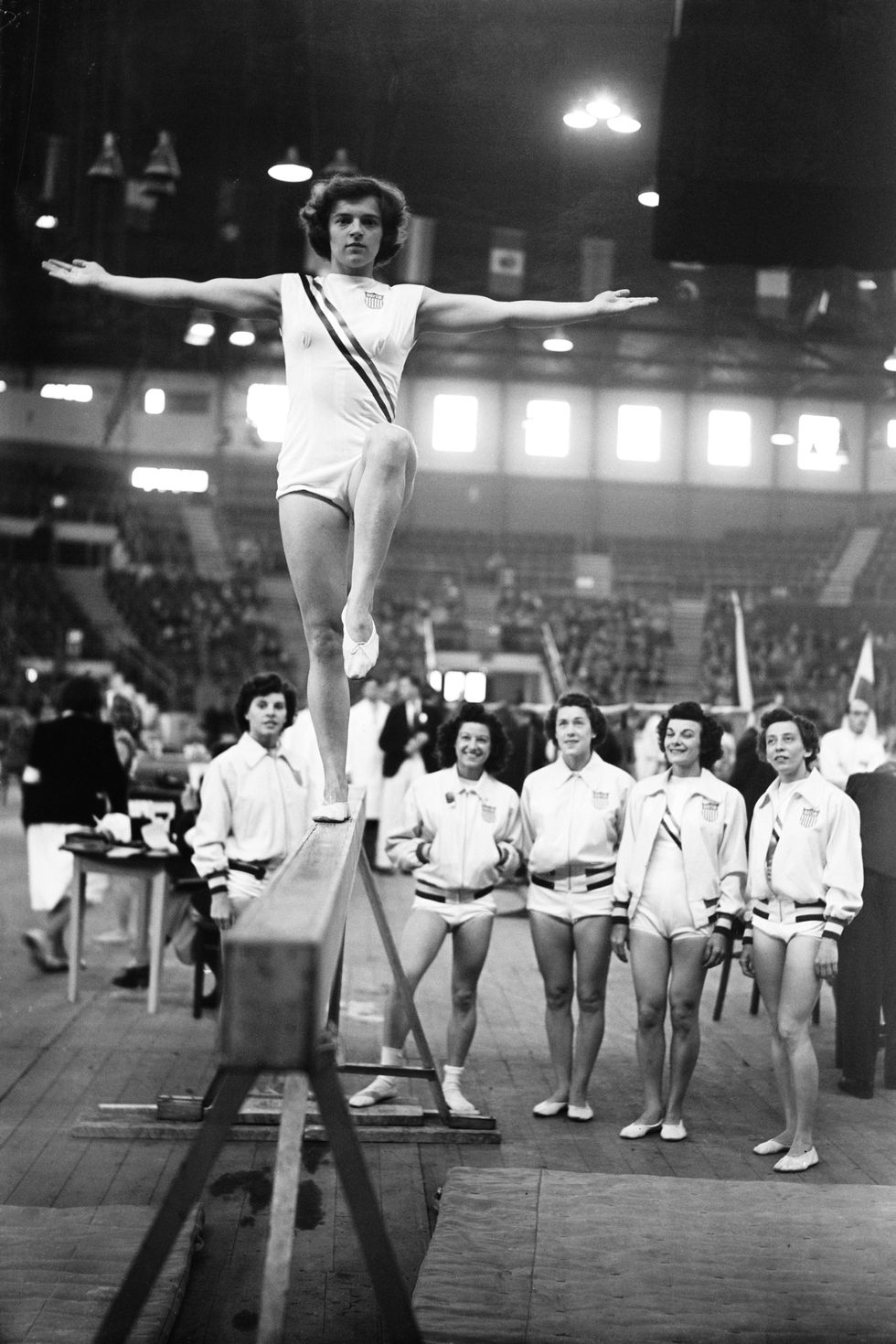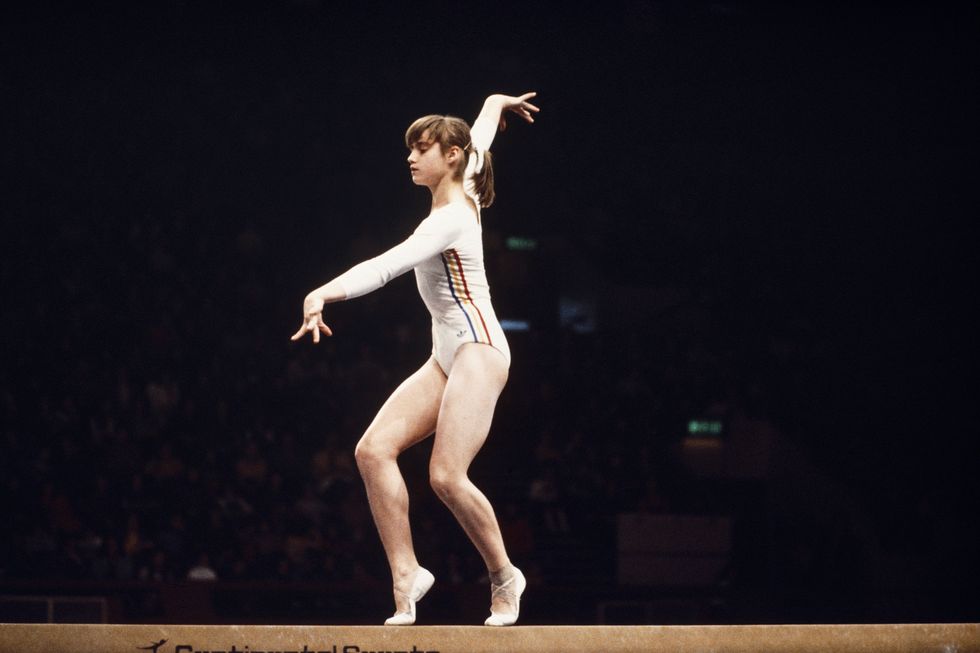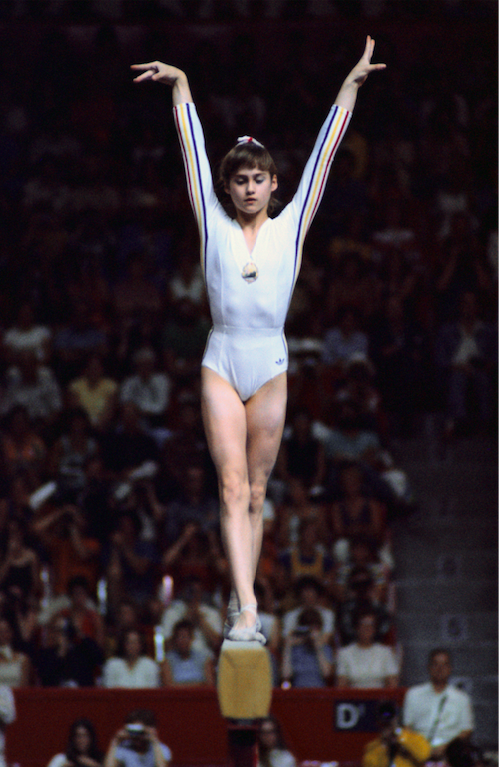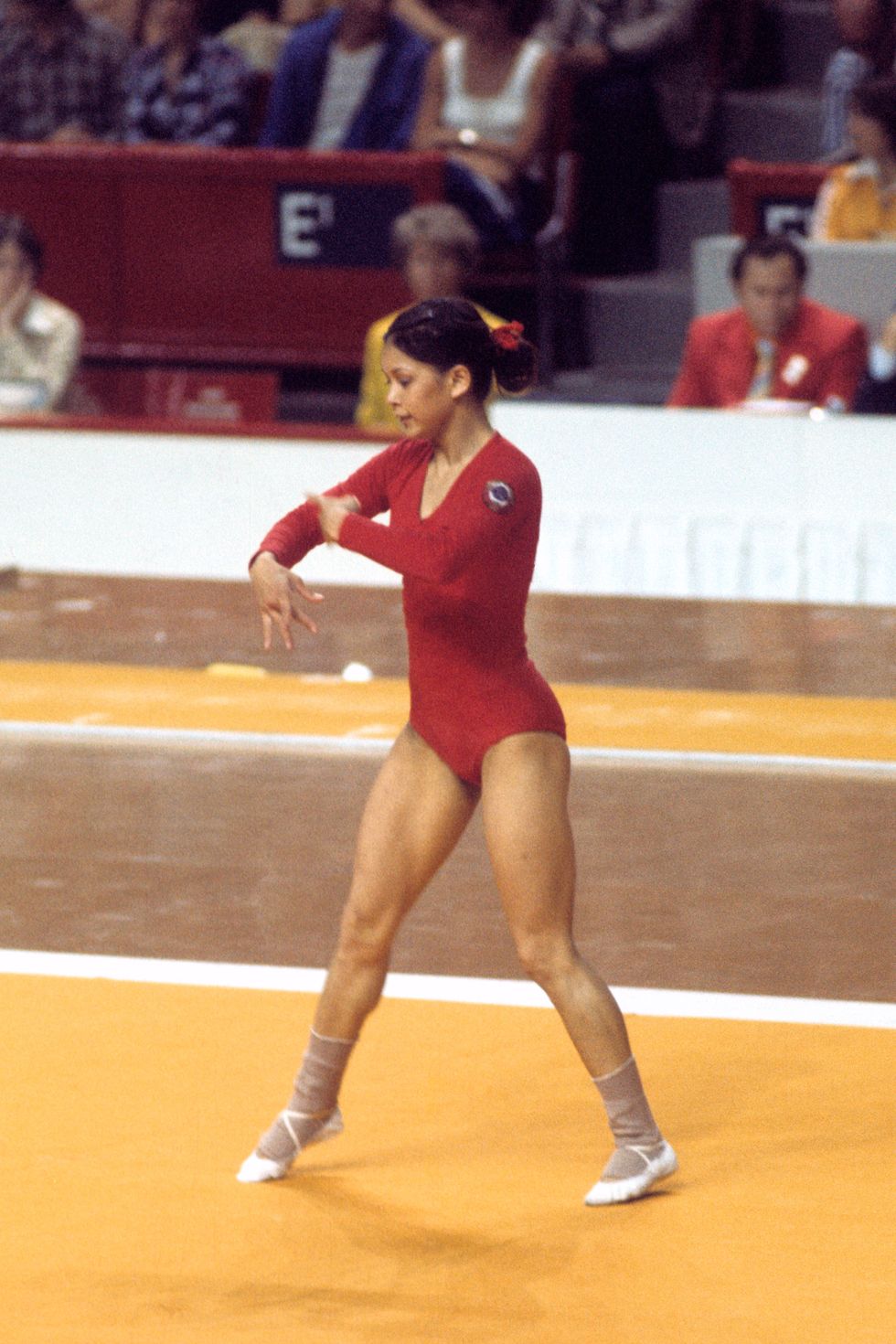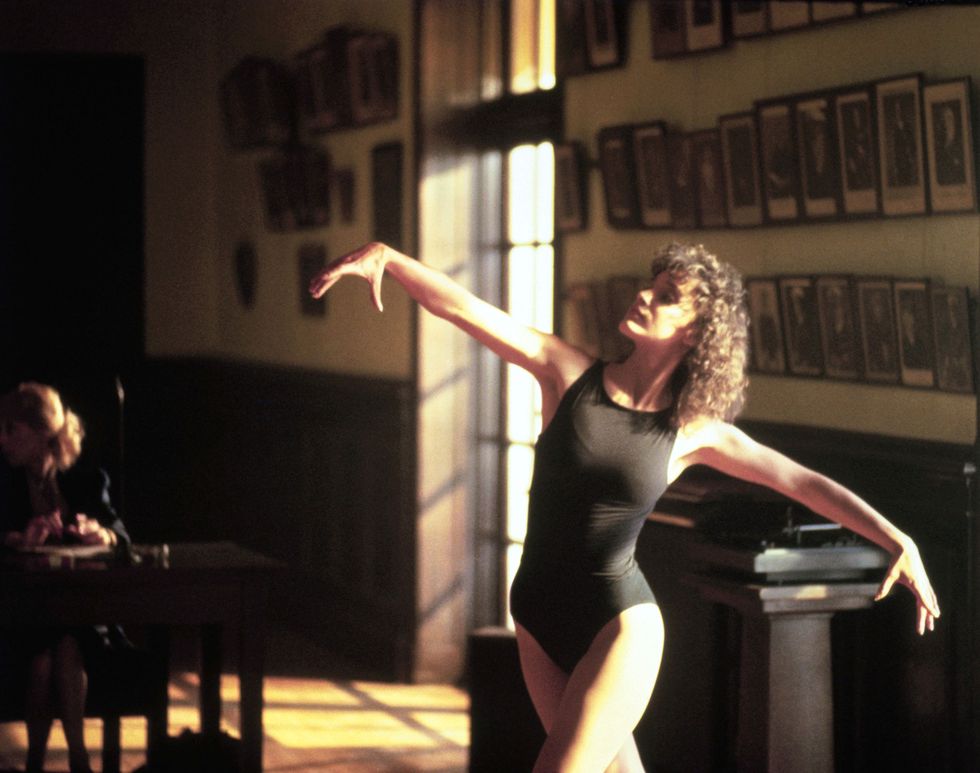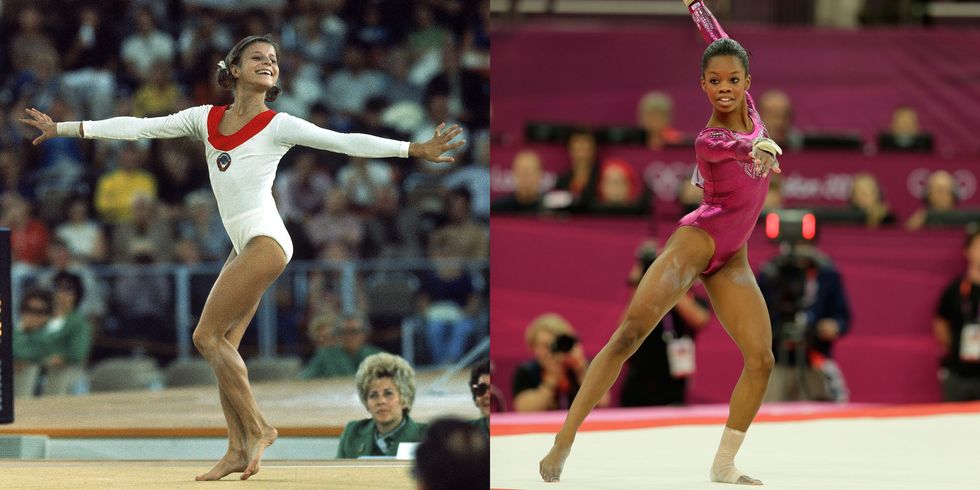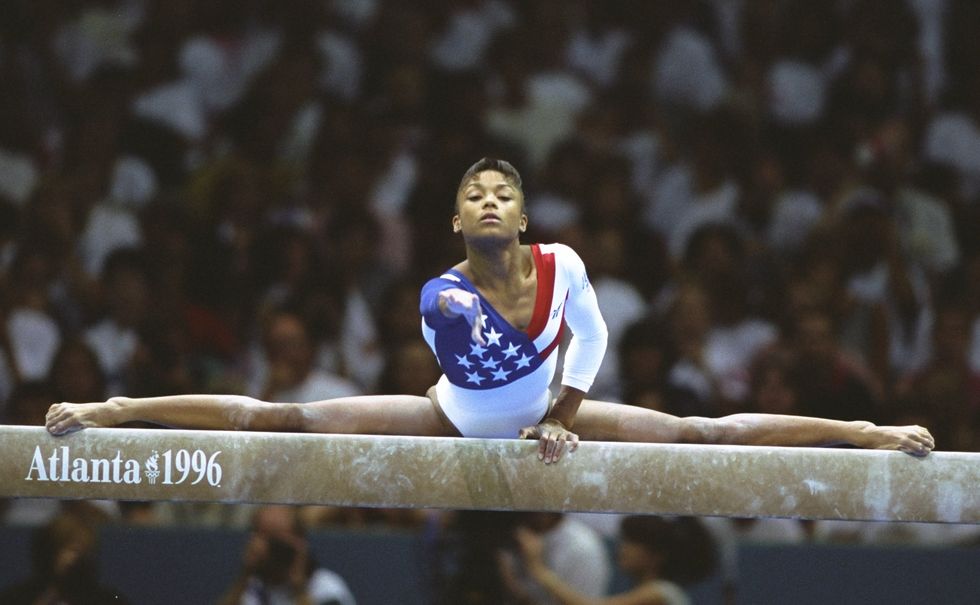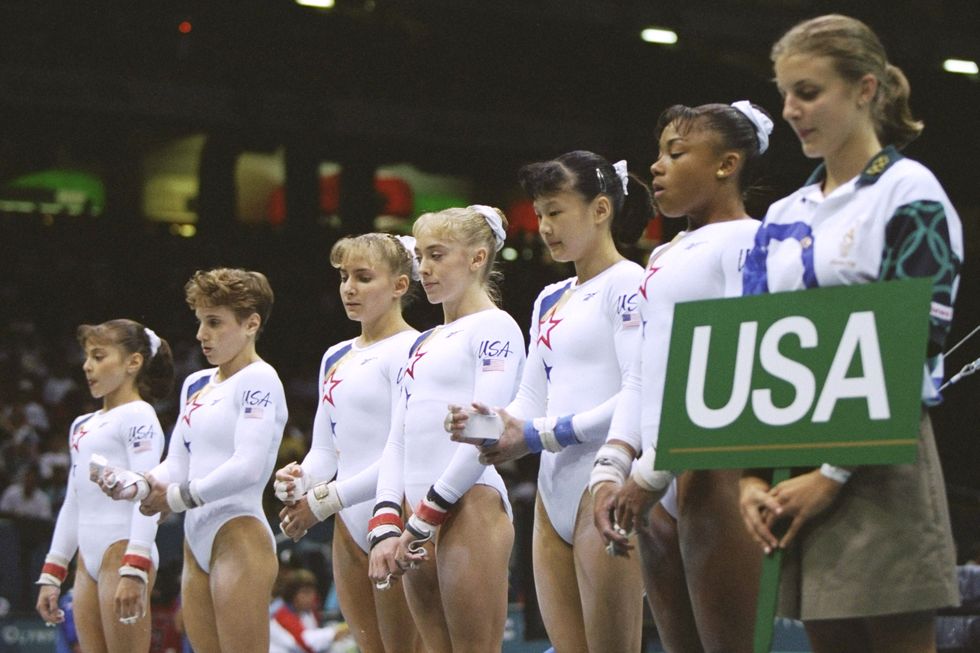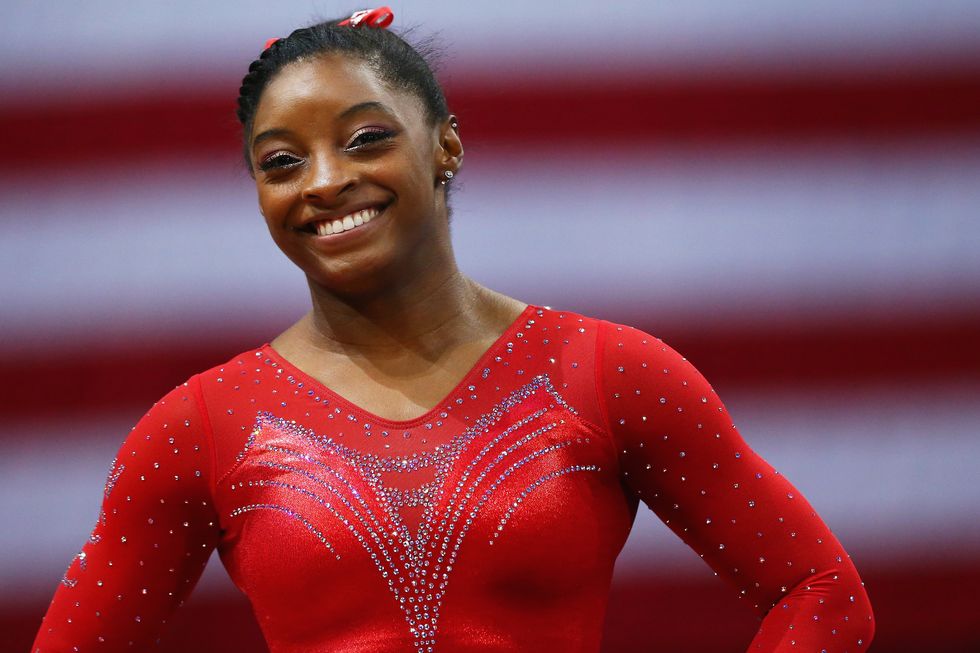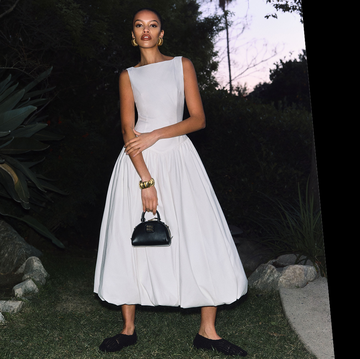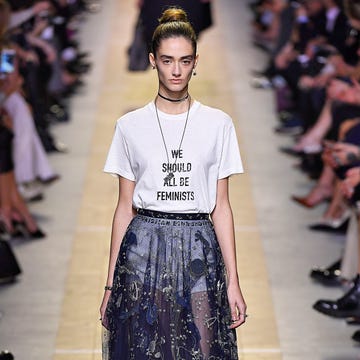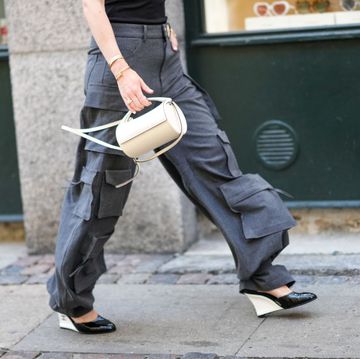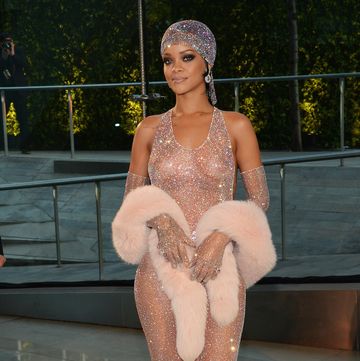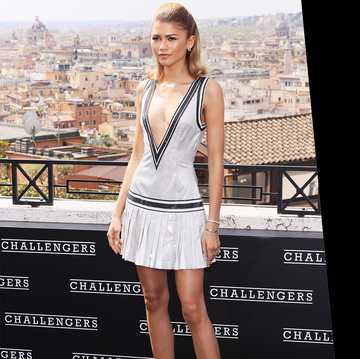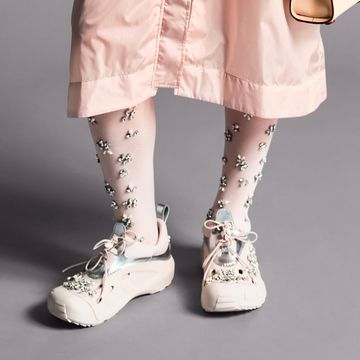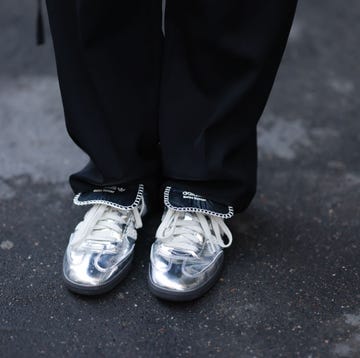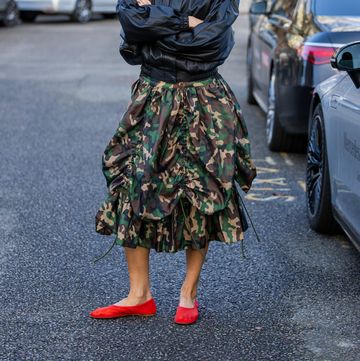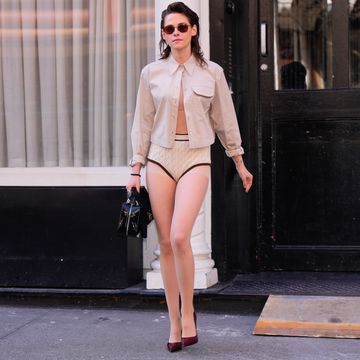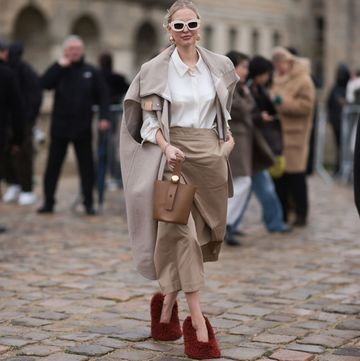When the U.S. women's gymnastics team marches into the arena in Rio to compete at the Olympics in August, all eyes will be on them. This will be due, in part, to the fact that they are the defending world and Olympic gold medalists. But another reason is that they will be decked out in the shiniest leotards of all the competitors. The jewel-toned leotards in deep pink, red, and purple will be adorned with anywhere from 3,500 to 4,000 crystals.
Leotards didn't always look this way. Back in the '30s and '40s, during the earliest years of women's gymnastics, leotards looked like something your grandmother might wear to the beach: the leg lines were low and boxy. The lower half offered maximum butt coverage. All that was missing was a little skirt and an Esther Williams-style swimming cap.
But as gymnastics evolved from dance—those very early gymnasts barely did anything more acrobatic than a walkover—to sport, the attire they wore to compete in changed, too. It became stretchier to allow for a greater range of motion and sleeker, to accommodate the gymnasts' increasingly muscular bodies.
Early Days
At the 1976 Olympics, Nadia Comaneci competed in a plain white leotard with Adidas-style side-piping in the colors of the Romanian flag—red, yellow, and blue. Her leotard, though not perfectly skin-tight, highlighted the straight edges of her prepubescent 14-year-old body.
The front was simple: a V-neck adorned with a medallion right below her clavicle. There was no flash.
Her main rival, 17-year-old Nellie Kim of the Soviet Union also competed in simple, relatively unadorned leotards: red with white stripes down the side or a deeply royal purple with a white collar.
She could've easily slipped a pair of jeans over the latter design and headed to a college class.
"Leotards in the '70s and '80s were actually driven by dance because of movies like Flashdance," says Amy Hess, a designer with Alpha Factor, one of the biggest leotard and gymnastics apparel makers in the U.S. Simple, Danskin-style designs were the normcore of dance and gymnastics apparel.
"If you laid an older leotard next to a newer leotard, it's like night and day," says Kelly McKeown, executive vice president of design and corporate relations at GK Elite, the other major leotard manufacturer in the gymnastics game.
The cuts, to a modern eye, look dramatically different: "The leg line is higher, which [gives] the girls a longer line," she explains. The higher cut helps create the optical illusion that gymnasts, typically among the shortest of athletes, have longer legs than they actually do.
Improved Technology
But the most important change in leotard construction over the last 15 years has been the improvement in fabric technology.
"The construction skills for stretch fabrics and the fabrics themselves were not nearly as close to the level they are today," McKeown says. "We now have four way stretch fabric. We have more durable fabric," Hess pointed out. "The fabric of the '70s and '80s didn't quite have the same elasticity."
This elasticity has been crucial in recent decades, as the sport has evolved to include increasingly athletic maneuvers. And the high-tech, shiny fabric has the advantage of showing off the athletes' powerful bodies. Shinier materials do a better job of displaying the cuts of their abs and triceps. "The elite athletes don't have any 'sins' to hide so you might as well show it off," Hess says. "It's very body forming," she continues, of the compressed, iridescent materials. "It will show every muscle. If your six pack is ripped, it will show it."
The bright white, 1996 Olympic team leotard, with the American flag emblazoned across the athletes' chests, was chosen specifically for the purpose of highlighting the athletes' physiques. "Marta insisted on white bodies," McKeown said, referring to the 1996 head coach Marta Karolyi. "She wanted to show off the abs of the athletes."
From Patriotism to Dazzle
In the '70s, '80s, and '90s, most teams wore leotards that bore the colors of their nation's flag. But in the past decade, many teams have moved away from this mode of patriotism. The U.S. women, in particular, have become known for wearing bright pink.
Nowhere is this shift from practical patriotism to stylish distinction more apparent than the increased crystallization of leotards. "The more you can crystal the better," Hess says. McKeown told me that some in the international community have wondered whether there is some sort battery pack built into the team's leotards that enables them to shine so brilliantly. "The amount of crystals that we're putting on the leotards has just gone off the charts," she said. "Some of the leotards are valued at full retail at over one thousand dollars. For one."
McKeown says the increase in sparkleage is connected to figure skating's influence on the look of the sport. Skaters have been bedazzling their costumes long before gymnasts got ahold of bling. "We do a lot of custom designs and we often get pictures sent into us of an ice skating costume," McKeown says. She also notes the increased use of mesh as another sign of figure skating's impact.
Hess suggests another source for the bling invasion: "Cheerleading is just a glitter fest," she says. She pointed out that a lot of gyms have cheerleading programs in addition to competitive gymnastics teams. It would be quite easy for cheerleading and gymnastics to cross-pollinate, fashion-wise.
McKeown believes that all of the little details help make the gymnasts feel special. "When you think about the psyche of a teenage girl—and a lot of them are either teenagers or just into their early twenties—it's like showing up to the prom," she says. "You don't want to look like another person. You want to feel special. You want to look beautiful. It all plays into how you feel, and how you feel affects how you perform."
And when it comes to designing the Olympic leotards, every detail is taken into account: the body types and skin tones of the contenders, even the color of the mats. Knowing the color of the mats and the trim around the podium helps McKeown and Marta Karolyi, who is currently the national team coordinator, figure out which colors will look best on the girls and pop off the mats.
Beyond the Olympics
Arguably, the college leotard is more receptive to fashion trends than its elite sister. College gymnastics, as a whole, is more plugged into pop culture, from fashion to music selection to dance routines. Can you imagine an Olympic gymnast dabbing and nae naeing, as UCLA gymnast Sophina DeJesus did in her viral routine earlier this year?
And anyone who has watched college gymnastics has probably noticed that a lot of the leotards favor an open or ornately decorated back. "We do a lot of college teams and for almost all of them, the focal point is the back and the bling," McKeown said. "Those are the biggest takeaways—how unique the back can be and how much crystal you can put on the leotard."
Even if elite Olympic gymnastics is a bit more staid than its university counterpart, it still demonstrates the singular direction in which leotard deign is moving: "tighter, shinier, sparklier."
